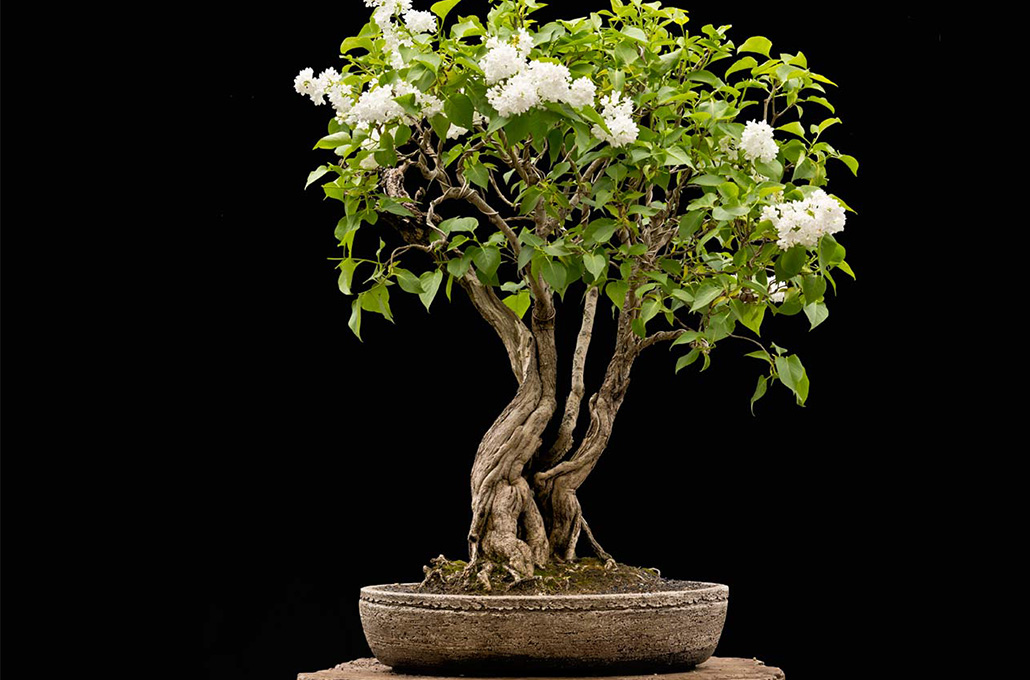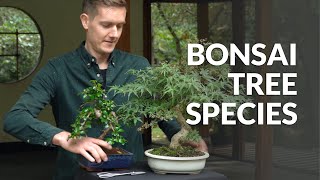Lilac Bonsai Care guidelines
The lilac thrives in full sun or partial shade. During the hottest weeks of summer it is advisable to provide some shade over midday and early afternoon, especially for smaller bonsai trees in shallow pots. Lilacs only need protection from stronger frost when they are planted in small bonsai containers.
The lilac bonsai tree should be kept slightly moist and its roots must not dry out completely. Water thoroughly as soon as the soil starts to get dry. On the other hand excess wetness must be avoided. Lilac trees prefer pH values between 5.5 and 7 but tolerate some lime, so rain water and most tap water can be used. If the water is more acidic this can be compensated for with a calcareous fertilizer. Continue reading about watering Bonsai trees.
Watering
Free lecture from the Beginners CourseUse a solid organic fertilizer every month and / or a liquid fertilizer once a week during the growing season. To promote flowering you can use a special product for flowering plants with increased phosphorous and potassium content. Too much nitrogen would promote excessive shoot growth with long internodes and might reduce the willingness to flower.
Allow the young shoots to extend to three or four nodes before pruning them back to one pair of leaves. Overly large leaves can be removed throughout the growing season. The best time to prune larger branches is in early spring. Young shoots can be wired during the growing season. The detail wiring of twigs and branches is best done during winter dormancy when no leaves are in the way. Older lilac branches become stiff and brittle and can only be wired with great care. Guy wires should be used for shaping stronger branches. Continue reading about pruning Bonsai trees.
Lilac trees should be repotted every two years in early spring. About one third of the rootball can be removed without causing problems. Older and larger specimen can be repotted in longer intervals. Use a well-draining standard soil mixture. Continue reading about repotting Bonsai trees.
Lilacs can be propagated from root saplings or cuttings. Air-layering is also possible.
The lilac bonsai tree is rarely bothered by pests and diseases, but can be affected by scale, leaf miners, caterpillars, lilac ash borers, lilac bacterial blight, phytophthora shoot blight, powdery mildew, verticillium wilt or leaf-spot fungus. Use a specific pesticide or ask a professional gardener for help in difficult cases. For more detailed information on these techniques, check out our Bonsai tree care section.

lilac (Syringa bonsai)
General information about the Lilac Bonsai tree
The common lilac (Syringa vulgaris) and Chinese lilac (Syringa chinensis) can grow up to 4 m tall while some other species only reach 1.5 to 2 m. Most lilacs have simple dark green opposite cordate or oval leaves; only Syringa laciniata and Syringa pinnatifolia have pinnate leaves. The dense terminal panicles of fragrant flowers appear from May to June and usually have a lilac, purple or white colour. The flowers have a tubular base and four lobes at the top. The fruit is a capsule that opens when it gets brown and dry and releases winged seeds. Lilacs are very popular ornamental shrubs which are planted in many gardens and parks, appreciated especially for their abundant sweet-smelling flowers.
Among the most popular lilac species for bonsai are the common lilac (Syringa vulgaris), which is best for larger bonsai sizes because of its rather coarse twigs and large leaves, the dwarf lilac (Syringa meyeri 'Palibin') which is well suited for shohin bonsai, Corean lilac (Syringa patula) and the Chinese lilac bonsai (Syringa chinensis). All lilac species are frost-hardy.
If you need help identifying your tree, take a look at our Bonsai tree identification guide.

